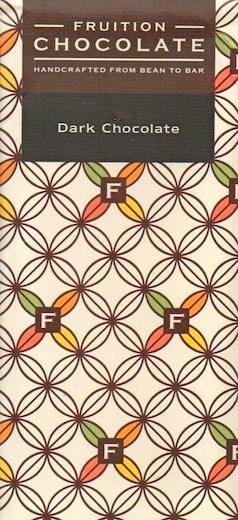
Impact
Among the earliest people of the land known as modern-day Dominican Republic, from where the cacáo in this bar originates, the Tainos believed that the forest there is inhabited by cemíes (spirits) of the dead called opías. Anyone could identify opías because they lack navels. They supposedly come out of the forest at night to feast on guayaba (guava). Tropical bats also munch on guayaba at night which led the Tainos to associate opías with bats.
As spirits of the dead, opías also associate with the deities of the underworld (the place of death). According to Ramón Pané, the Hieronymite friar sent by Columbus to study native mythology, one such deity "Opiyelguobirán has 4 feet like a dog & [made] of wood”.
Yale Prof. José Juan Arrom suggested that this deity served as the daylight guardian. Greek mythology assigned a similar role to Cherberus, the 3-headed dog who stood at the river crossing that marked the entrance into the realm of Pluto.
In Cave of the Jagua: The Mythological World of the Tainos, author Antonio Stevens-Arroyo identifies Opiyelguobirán as one of the twins who assist Maquetaurie Guayaba -- the Lord of the Dead, Master of Sweetness & Delight, symbol obviously of the guayaba berry (whose juice produced the Tainos’ black body paint which symbolized death). He was represented by bat symbols.
Additionally, Opiyelguobirán, as Master of Privacy & Felicity, was the twin of the picaresque Corocote -- Guardian of Sexual Delight, Romance, & Spontaneity.
Anthropologist Henry Petitjean Roget points out that "cemíes are not specific representations but symbolic entities... like many symbols, [they] cannot be reduced to a single interpretation."
And neither can this bar.
As spirits of the dead, opías also associate with the deities of the underworld (the place of death). According to Ramón Pané, the Hieronymite friar sent by Columbus to study native mythology, one such deity "Opiyelguobirán has 4 feet like a dog & [made] of wood”.
Yale Prof. José Juan Arrom suggested that this deity served as the daylight guardian. Greek mythology assigned a similar role to Cherberus, the 3-headed dog who stood at the river crossing that marked the entrance into the realm of Pluto.
In Cave of the Jagua: The Mythological World of the Tainos, author Antonio Stevens-Arroyo identifies Opiyelguobirán as one of the twins who assist Maquetaurie Guayaba -- the Lord of the Dead, Master of Sweetness & Delight, symbol obviously of the guayaba berry (whose juice produced the Tainos’ black body paint which symbolized death). He was represented by bat symbols.
Additionally, Opiyelguobirán, as Master of Privacy & Felicity, was the twin of the picaresque Corocote -- Guardian of Sexual Delight, Romance, & Spontaneity.
Anthropologist Henry Petitjean Roget points out that "cemíes are not specific representations but symbolic entities... like many symbols, [they] cannot be reduced to a single interpretation."
And neither can this bar.
Appearance 4.6 / 5
| Color: | blushing for its namesake |
| Surface: | aesthetic mould, a brown impression of the label (click image upper right to enlarge) |
| Temper: | semi-gloss |
| Snap: | guttural burr |
Aroma 8.4 / 10
a steamy pot of trop fruits (mango / mangosteen + guava / guavasteen), sour cream / buttermilk, coffee / cigarette
all so streamline to almost suggest a Venzy (such as Carenero)
all so streamline to almost suggest a Venzy (such as Carenero)
Mouthfeel 12.6 / 15
| Texture: | buoyant |
| Melt: | an elapsed lap dancer |
Flavor 45 / 50
fruit-fudge brownie... starts with the trops in the Aroma (add soursop) then reddens considerably (cherry, dried apricot, & sapote), simultaneously the cocoa base darkens to tree bark (mango wood & roblé), then browns of a different shade (figs / tamarind / molasses) -> thick licorice cut by cereal grains that eventuate some cookie action -> almond tracer -> stringency signals a citric splash (gauva to granadillo-rum) for the close -> more cookie dough in the downshaft
Quality 17.3 / 20
Aroma aside, true to this cultivar's origin / genotype(s). Indeed, Aromatics & Tongue cop each other well.
A big, bold shape-shifter, with flavors crisscrossing over each other.
Straddles several fine lines (flesh vs. gum in the Texture; soil / earth / fruit vs. tar / dirt / stones in the Flavor).
Bryan Graham of Fruition navigates them with aplomb & meticulous attention to detail.
Perhaps a tad too robust in parts, which suppresses some of the highlights & drives this bar into the lower depths, especially at the midpoint. Overall a little imprecise but more than just acceptable... it's got some soul-sauce to put just about anyone in a good place.
INGREDIENTS: cocoa mass, sugar
Reviewed May 10, 2013
A big, bold shape-shifter, with flavors crisscrossing over each other.
Straddles several fine lines (flesh vs. gum in the Texture; soil / earth / fruit vs. tar / dirt / stones in the Flavor).
Bryan Graham of Fruition navigates them with aplomb & meticulous attention to detail.
Perhaps a tad too robust in parts, which suppresses some of the highlights & drives this bar into the lower depths, especially at the midpoint. Overall a little imprecise but more than just acceptable... it's got some soul-sauce to put just about anyone in a good place.
INGREDIENTS: cocoa mass, sugar
Reviewed May 10, 2013




